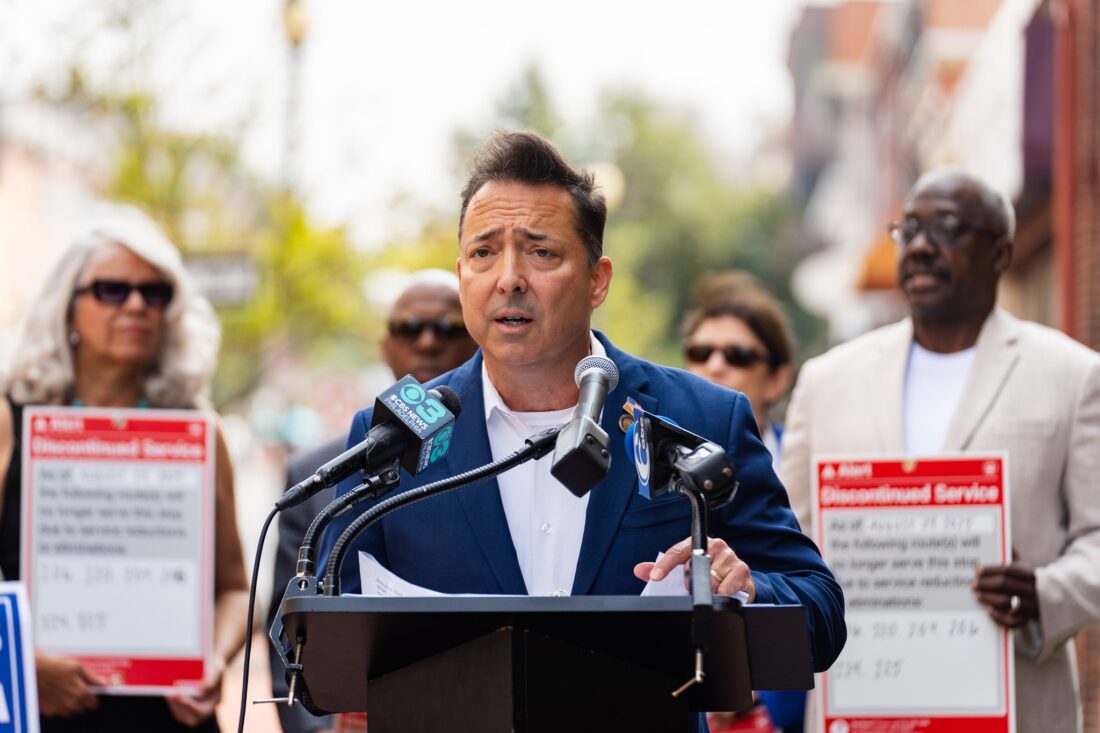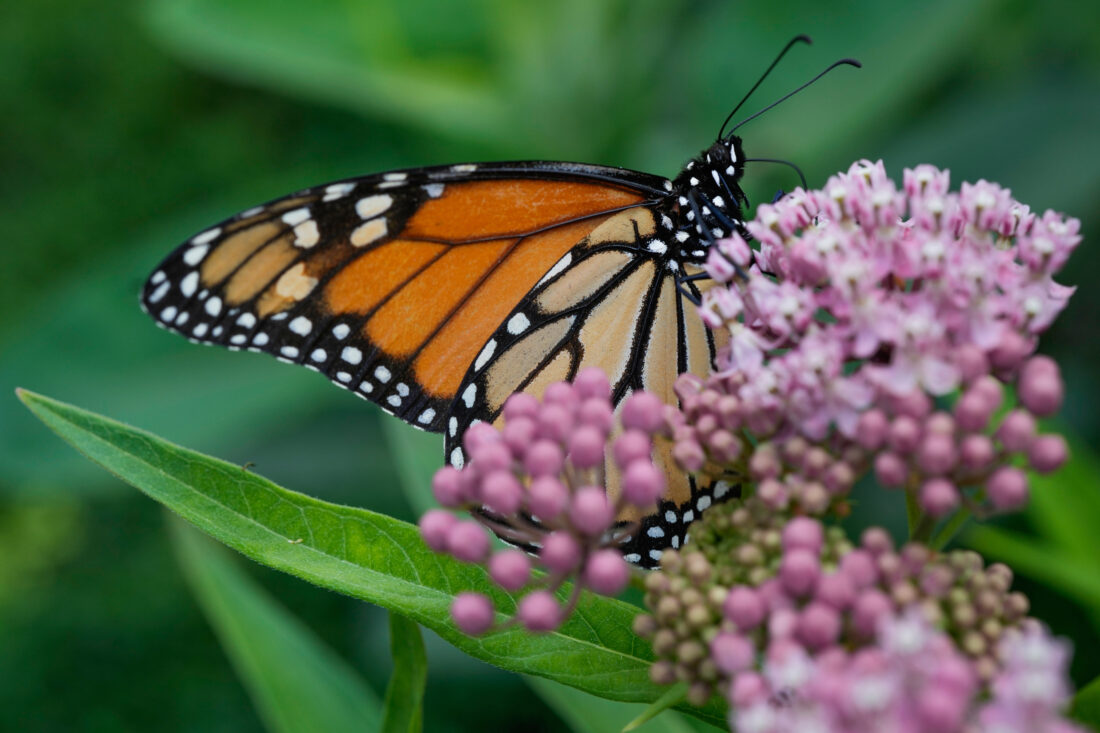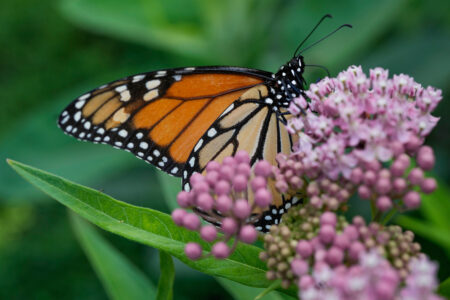Dems pass pollinator, insect protection bill

Rep. Chris Pielli, D-Chester, speaks during a news conference in August. Legislation sponsored by Pielli to protect the state’s pollinators has been approved by the state House of Representatives in a party line vote, making its future in the state Senate uncertain.
- Rep. Chris Pielli, D-Chester, speaks during a news conference in August. Legislation sponsored by Pielli to protect the state’s pollinators has been approved by the state House of Representatives in a party line vote, making its future in the state Senate uncertain.
- AP Photo A monarch butterfly feeds on milkweed Tuesday, July 15, 2025, in Chicago.
Its Senate fate isn’t promising, however, given that it passed the House in a 102-101 vote with no Republican support. Of the 37 co-sponsors of House Bill 441, none were Republicans. Chris Pielli, D-Chester and the bill’s sponsor, said Pennsylvania is home to at least 77 endangered insect species. Pollinators such as the bumblebee and the monarch butterfly are declining, according to recent studies.
Pielli’s bill would amend the state’s Wild Resource Conservation Act of 1982 to give Pennsylvania’s Department of Conservation and Natural Resources authority over terrestrial insects. That authority would include allowing the state to protect insect species by preventing the need for federal Endangered Species Act protection, something Pielli said will allow the state to begin protecting native species earlier. Pielli said the state is home to nearly 100 species of imperiled land-dwelling insect species, many of which are valuable pollinators. No state agency currently has authority over terrestrial insects like monarch butterflies and other pollinators.
He said it would also give Pennsylvania more authority to speak with federal agencies acting to conserve protected insect species, provide funding opportunities to offset the costs of insect species recovery, permit interagency coordination when insect conservation issues such as highway management and light pollution are discussed and allow the state Department of Conservation and Natural Resources to invest in pollinator species needed for food production and resilient natural areas.
“Since the 1990s, the population of monarch butterflies in North America has declined by 95%. They are now an endangered species. Without insects and pollinators like the monarch butterfly, flowers and crops cannot survive. To ensure human welfare, we must protect them,” Pielli said. “That is why I’ve introduced H.B. 441, a bill which will address the conservation of wild native terrestrial insects by adding language that protects them under Pennsylvania’s Wild Resource Conservation Act, thus upholding our constitutional right to the preservation of natural, scenic, historic and aesthetic values of the environment in Pennsylvania.”

AP Photo A monarch butterfly feeds on milkweed Tuesday, July 15, 2025, in Chicago.
It’s estimated the bill will cost the state $310,000 in 2025-26 and $490,000 in 2026-27, according to a fiscal memo. Three permanent entomologists would have to be hired while the state will also have to pay subcontractors and purchase new equipment. House Bill 441 now heads to the state Senate for consideration.
According to an Associated Press report earlier this year, the first countrywide systematic analysis of butterfly abundance found that the number of butterflies in the lower 48 states has been falling on average 1.3% a year since the turn of the century, with 114 species showing significant declines and only nine increasing, according to a study in the journal Science.
“Butterflies have been declining the last 20 years,” said study co-author Nick Haddad, an entomologist at Michigan State University, to the AP. “And we don’t see any sign that that’s going to end.”
A team of scientists combined 76,957 surveys from 35 monitoring programs and blended them for an apples-to-apples comparison and ended up counting 12.6 million butterflies over the decades. Last month an annual survey that looked just at monarch butterflies, which federal officials plan to put on the threatened species list, counted a nearly all-time low of fewer than 10,000, down from 1.2 million in 1997.
Many of the species in decline fell by 40% or more. Some well-known species had large drops. The red admiral, which is so calm it lands on people, is down 44% and the American lady butterfly, with two large eyespots on its back wings, decreased by 58%.
Federal wildlife officials announced late in 2024 they will consider adding 10 new species to the Endangered Species Act, including a big bumble bee that serves as a key pollinator across the United States.
One of the more prominent species up for consideration is the Southern Plains bumble bee, a large black-and-yellow bumble bee that inhabits open prairies, meadows and grasslands in the Midwest, the mid-Atlantic states and the Plains states from Texas to North Dakota. It’s also found in the grasslands and savannas in the southeastern U.S., including Florida. Queens can grow as large as an inch (26 mm); workers can grow to as large as three-quarters of an inch (18 mm).
The Center for Biological Diversity petitioned the U.S. Fish and Wildlife Service in 2022 to include the bee on the Endangered Species List. According to the center, habitat loss and degradation as well as pesticides have led to sharp population declines in the southern Plains states, including Texas and Oklahoma as well as in Alabama and Mississippi.




